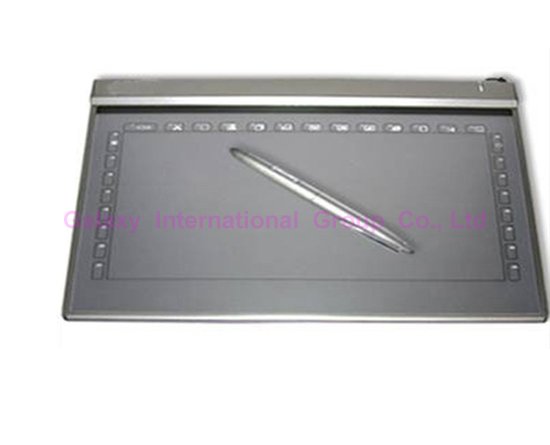The Sistine Chapel Ceiling-Michelangelo
I've made this drawing useing the aiptek graphic tablet let me know what you think about this..thank you
let me know what you think about this..thank you
I've made this drawing useing the aiptek graphic tablet
This is what Ackermannn on deviantART had made with a graphic tablet.

What is a graphics tablet?
Also referred to as a digitizing tablet, graphics pad, or drawing tablet, a tablet is an alternate type of input device that can be used in place of, or in conjunction with, a mouse, trackball, or other pointing device. The tablet consists of two parts, a flat surface for drawing, and a pen, stylus, or puck that is programmed to work with the tablet. Usually, you also get a pen holder, and some tablets even come with a cordless mouse that works on the tablet surface. Even non-artists may choose to use a tablet because it offers a more ergonomic method of input that can reduce the likelihood of developing repetitive strain injury. Let's explore some of the common features of graphics tablets...Size
Size is one of the first factors you'll need to consider in choosing a tablet. Bigger is not necessarily better. For home users and hobbyists, the most common sizes are 4" by 5" and 6" by 8". CAD users, artists, and technical illustrators may desire a larger surface area, but the price escalates as the size increases. Remember, the larger your tablet surface is, the more you will need to move your arms. Many people prefer a smaller tablet to minimize arm motion. However, this may feel unnatural to an artist who is used to drawing or painting with large sweeping motions. Another important thing to know about tablet size is that the dimensions given almost always refer to the input surface area of the tablet. The actual footprint of the tablet can be as much as 4 to 5 inches larger than the input area. Keep this in mind as you shop, or you may be surprised that your tablet takes up much more desktop space than you may have considered. My 6" by 8" Wacom Intuos tablet, for instance, has a footprint of 10" by 13.5". .... http://graphicssoft.about.com/od/aboutgraphics/a/graphicstablets.htmInterface
The interface is how your tablet connects to your computer. Most tablets these days have a USB interface which is ideal since most computers in use today support USB. USB devices are hot swapable so you'll be ale to move the tablet more easily for use on multiple computers or just to get it off the desk when you need to....graphicssoft.about.com/od/aboutgraphics/a/graphicstablets.htmPen/Stylus and Accessories
Your tablet should come with a pen that feels comfortable and natural in your hand. Find out if the stylus requires a battery. A battery will not only require occasional replacement, but it will make the pen heavier, too. Your pen may be tethered or free. If the pen is untethered you'll have to be more careful about losing or misplacing it. If the pen is tethered, make sure you can choose which side of the tablet to attach the pen. Many pens will... graphicssoft.about.com/od/aboutgraphics/a/graphicstablets.htmPressure-sensitivity
Pressure level refers to the sensitivity to pressure on the surface of the tablet. Most tablets have either 256, 512, or 1024 pressure levels. The pressure-sensitivity can control line thickness, transparency, and/or color. The higher the pressure-sensitivity, the more responsive and natural your tablet will feel and the more control you will have.Check out: Ackermannn
About.com
D.S



0 comentarii:
Post a Comment